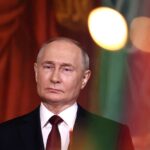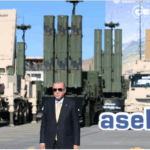Even as its members take part in Steadfast Defender 2024, NATO’s largest military exercise since the Cold War, it is clear that the alliance remains ill-prepared against Russia’s military capabilities in the Arctic. The exercise, which runs between January and May, involves more than 90,000 troops across the Atlantic and up to the Arctic and suggests that NATO has a strong and capable defense presence in the region.
Even as its members take part in Steadfast Defender 2024, NATO’s largest military exercise since the Cold War, it is clear that the alliance remains ill-prepared against Russia’s military capabilities in the Arctic. The exercise, which runs between January and May, involves more than 90,000 troops across the Atlantic and up to the Arctic and suggests that NATO has a strong and capable defense presence in the region.
However, a closer look at the capabilities of the Arctic states—which are all NATO members except Russia—reveals otherwise. Finland and Sweden’s recent membership in NATO has been heralded as a turning point in deterrence against Russia in the north. However, the countries’ proximity to northwest Russia means that their strategic focus is primarily targeted at the Baltic Sea region, where Russia has pursued a military buildup directed toward NATO’s eastern flank.
No NATO member state has ice-strengthened ships with both anti-aircraft and anti-submarine capabilities. The United States, Canada, Denmark, Finland, and Sweden have prioritized capabilities designed for other theaters, such as the Indo-Pacific and the Baltic Sea regions. Iceland, which has no standing army, only operates coast guard vessels. Norway has ice-strengthened coast guard vessels, but they are not designed for military operations.
Russia’s nuclear submarines, which are capable of launching an attack on North America, can travel from the Barents Sea through the Bear Gap between Scandinavia and Svalbard, Norway, and under the ice along the coast of eastern Greenland without being detected. This leaves big gaps in NATO’s defense posture. Russia’s war in Ukraine also gives it incentives to work with China in the Arctic, including joint naval exercises and coast guard cooperation.
NATO should not let Arctic deterrence fall by the wayside by concentrating its force posture along its eastern flank. Instead, the trans-Atlantic alliance must act urgently.
Russia’s 2022 naval doctrine raised the Arctic region to the highest priority. Between its invasion of Crimea in 2014 and 2019, Russia built more than 475 military facilities in the Arctic. Its Northern Fleet, located in the Barents Sea, accounts for around two-thirds of the Russian Navy’s nuclear strike capabilities. A multilayered network of sensors, missile systems, coastal defense systems, and electronic warfare technology protects these capabilities, including the strategic submarines.
Despite NATO Secretary-General Jens Stoltenberg sounding the alarm in 2022, the alliance lacks an Arctic strategy. Its current area of responsibility extends only to the “High North,” a less ambitious term that describes the ice-free parts of the Arctic. The term is indicative of disagreement within NATO over whether its remit goes beyond the North Atlantic.
As glaciers melt, more countries from outside the region are engaging in the Arctic, which risks further crowding the Northern Sea Route and incentivizing Russia to protect the entry and exit points to its military bastion.
Russian vulnerabilities in the Arctic have affected its strategic cooperation with China. On the one hand, Russia needs to cooperate more with Beijing—in areas such as digitalization; infrastructure; and intelligence, surveillance, and reconnaissance—to utilize the economic potential of the Northern Sea Route and protect its strategic assets. On the other hand, Russia is concerned with maintaining control of its Arctic coastline.
Moscow will cooperate with Beijing if this red line is respected. Although access to Russian facilities and ports will allow China to use its military capabilities in the Arctic, including icebreakers and semi-submersible vessels, Beijing has little interest in becoming a military power in the region. Decades of strategic coordination in Central Asia and in the Korean Peninsula have proved that China understands the benefits of not undermining Russia, even if Moscow’s geopolitical agenda is not always to Beijing’s liking.
Despite Chinese concerns over Russia’s war of attrition in Ukraine and its military-strategic cooperation with North Korea, Beijing benefits from Moscow maintaining a strong force posture toward NATO. This is especially true in the case of the Arctic, where a permanent Chinese presence would open a new front with U.S. allies at a time when Beijing is already engaged in hot spots in its own backyard.
The supply line that runs through the GIUK gap—the strategically important entrance to the North Atlantic between Greenland, Iceland, and the United Kingdom—is a vital route for U.S. and Canadian forces to deploy and send supplies to northern Europe in the event of military conflict with Russia. Moscow can currently disrupt this supply line without NATO intervention because the Nordic states in the Arctic do not have capabilities to detect Russian forces operating in the Bear Gap and off the coast of eastern Greenland.
This mismatch underscores how countries such as Norway and Denmark have limited defense budgets but major responsibilities—including manning the Arctic and Baltic regions as well as, in the case of Norway, a land border with Russia.
Such budget constraints explain the reluctance to acquire the expensive capabilities to take on responsibilities that should fall to all Arctic NATO member states. But the widespread unwillingness among all members to invest in Arctic capabilities is easily explained: NATO has focused on pushing member states to spend 2 percent of GDP on defense, and investments in capabilities such as ice-strengthened navy vessels do not count as contributions to NATO’s minimum force requirements. That comes at the cost of Arctic security, which Russia is willing to exploit.
Amid heightened tensions with Russia, it is important that NATO does not ignore Moscow’s threat in the Arctic. This is not to say that trans-Atlantic allies should engage in a massive military buildup that risks provoking a Russian military response. Russia is likely to interpret freedom of navigation operations from states that do not border the Arctic Ocean, such as the United Kingdom, France, and Italy, as an escalatory NATO presence from states that lack legitimate obligations to patrol the Arctic.
A Russia that perceives itself as vulnerable in the Arctic may respond more forcefully than is desirable from NATO’s perspective. This points to the need for the United States, Canada, Denmark, and Norway to take on more responsibility for deterrence in the region by focusing on the areas adjacent to their sovereign territories.
As it marks its 75th anniversary, NATO should come to an agreement on an Arctic strategy. For starters, it should revisit and update its minimum force requirements and allow members states to count the development of special capabilities, such as ice-strengthened frigates, as contributions to the NATO spending targets. As U.S. leaders increase pressure on other NATO member states to meet the defense spending target—ultimately requiring those states to cancel other investments in areas such as public welfare—few states can justify taking on defense expenses that do not count as part of the minimum force requirements.
Although Finnish and Swedish membership has seemingly enhanced NATO’s Arctic posture, the alliance still has a long way to go in the region. NATO must increase its footprint in the Arctic to credibly deter Russia’s military force posture.
By Liselotte Odgaard
Source: Foreign Policy







